Being absorbed in a great movie is such an incredible experience that millions go to cinemas every year. But you don’t need a 200-foot screen to feel immersed. You can capture that kind of experience almost anywhere with a good pair of augmented reality (AR) smart glasses.
Many would say augmented reality is much better. Smart glasses can seamlessly blend digital content and your environment, making augmented reality one of the best ways to stream new media and re-experience favorites.
AR glasses are made for a thousand different tasks, but the best AR glasses for movies must deliver the most essential features for a great cinematic experience.
These features include visual fidelity, lasting comfort, and ease of use. This list of requirements means that when it comes to movies, a handful of augmented reality glasses stand far apart from the rest.
In this article:
Best AR Glasses for Movies
Best Overall: MyW

With mixed reality glasses, there’s a world of difference between a good experience and a great experience.
Offering a peak brightness of 700 nits, our display isn’t just better equipped for going outdoors and provides a much better contrast ratio. Because great contrast is one cornerstone of an immersive movie experience, that factor alone can separate MyW from its nearest competition.
But the list goes on. Our MyW mixed reality glasses deliver sturdiness you don’t see in other products. Their 123-gram weight is hefty but essential for supporting a superior battery capacity.
You’ll also struggle to find augmented reality equipment that’s easier to use. These smart glasses are primarily controlled with the TV-like remote, but you can use your smartphone as an alternative.
MyW glasses are best suited for watching media, such as streaming Netflix, browsing through your YouTube subscriptions, or keeping up with social media. However, because these glasses work with a modified version of Android, you can download nearly any app from your preferred app store.
Even though MyW glasses are primarily for creating a cinematic experience, they have some well-rounded features worth pointing out. A respectable 1300W/13MP camera allows for first-person content recording that’s on par with the quality you’d expect from a modern smartphone. At the same time, real-time translation makes travel to foreign lands a breeze.
If you’re interested in trying an AR movie experience, you should start by checking out MyW.
Best for Portability: Rokid Max

Few augmented reality glasses are quite as appealing as the Rokid Max for those who travel off the beaten path. In terms of raw portability, the Max and its 75 g weight are hard to beat — each device is essentially just a pair of sunglasses with a pocket-sized remote.
These glasses are a mid-range option for AR, so you will see a few corners being cut — but rarely in places that matter for movie-watchers. For example, using Sony’s Micro OLED technology helps the Max deliver a competent 1080p quality — equivalent to what you’d expect from watching a movie on a decent computer monitor.
With six control levels, these glasses’ brightness peaks at 600 nits. You’ll find a brightness setting that works reasonably well regardless of the weather or time of day. The lenses also offer about a 90% light leakage reduction, so you can keep your privacy while using them.
How about limitations? Well, the Max uses a 50-degree field of view. That’s a tad narrower than many of its competitors, and it slightly impairs the immersion of your viewing experience. You can see a borderless screen projected 18 feet in front of you with the glasses on correctly.
Those are the kinds of limits that come with extreme portability. A lower battery lifespan is another limit that crops up for the same reason.
The remote is simple to use. It has four buttons and a control wheel to help you navigate through the various options. Plus, it can be connected to any Android device with a USB-C or DisplayPort interface, which opens up many possibilities.
Best for Multipurpose: XREAL Air2 Ultra
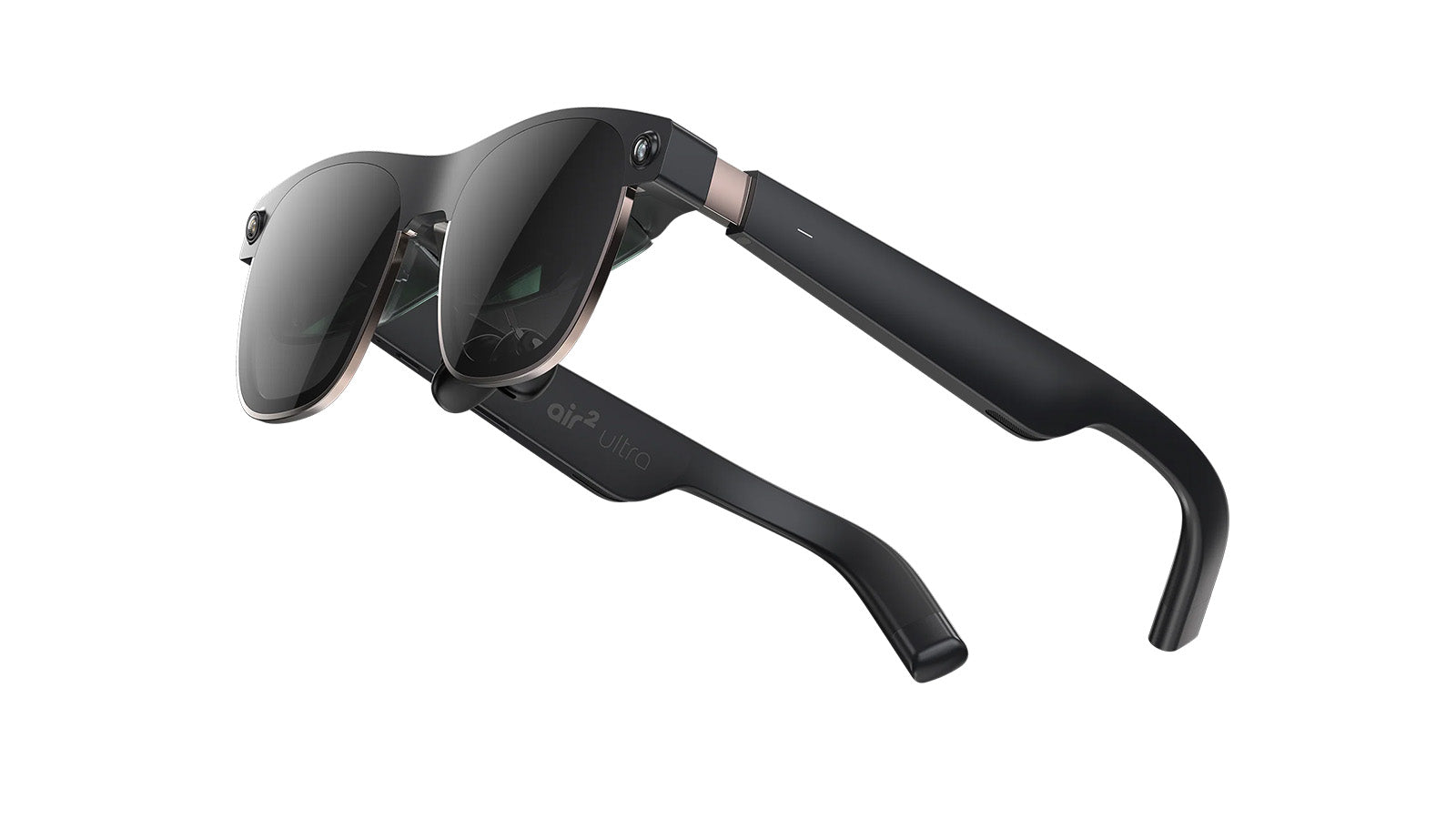
The XREAL Air2 Ultra is less focused on movie-goers and more focused on creating glasses for developers. However, this AR headset still has much to offer the average person looking to enjoy some movies.
Aesthetically, the Xreal Air looks like an ordinary pair of sunglasses. The bands are thicker than those of regular glasses because they hide electronics and battery weight. With a total weight of about 80 g, you will notice the heft of the sturdy titanium frame. It’s roughly twice the weight of ordinary sunglasses. But it’s not tiring for lengthy watching sessions.
The display delivers a 90Hz refresh rate while running 3D content, which is more than enough for movies. It also provides a 120Hz refresh rate for 2D content, which is suitable for gaming.
Brightness peaks at 500 nits — a very mid-range result that’s neither remarkably high nor remarkably low. You can toggle between three dimming levels, too. The brighter settings are primarily helpful for going outside with your AR headset. However, having only three settings makes these AR glasses a little weak when entering a very bright environment.
Things remain pretty smooth in terms of ease of use. These glasses’ multi-key functionality makes clicking through controls simple and intuitive. Plus, the Xreal Air uses environmental sensors that provide precise tracking and instant real-world mapping, keeping things simple. All in all, these glasses are quite well-balanced.
Best for Unlimited Budget: Apple Vision Pro
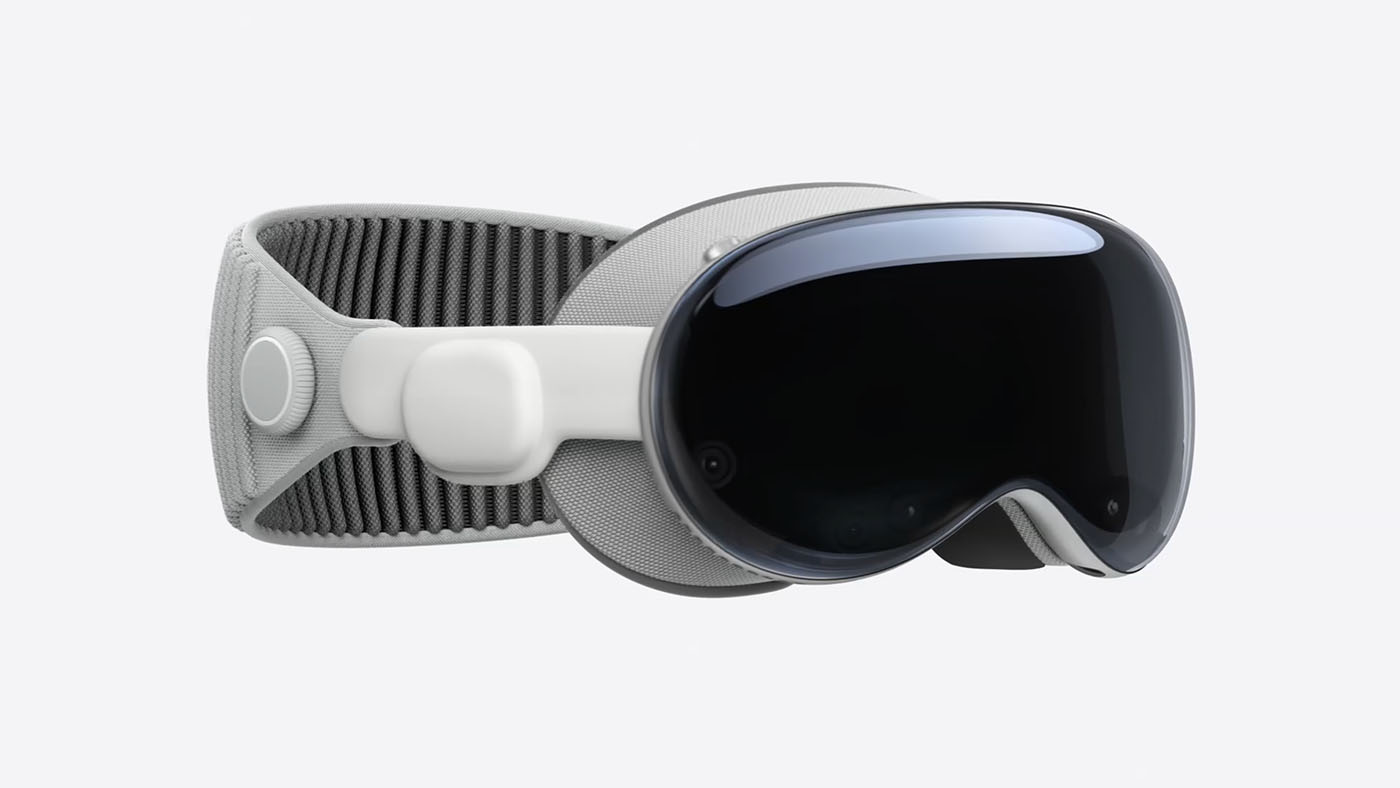
The Apple Vision Pro is widely considered the gold standard for AR headsets. You cannot find a higher-quality product. The problem? It’s about as expensive as a luxurious overseas vacation — and easily four times pricer than its closest competition.
You can’t question this headset’s quality. The micro-OLED display pushes about 23 million pixels, which is enough to deliver a 4K viewing experience.
Refresh rates exceed what the most ambitious gamers expect from a 4K display, providing butter-smoothness at high resolutions. Plus, brightness peaks at around 5,000 nits — nearly ten times that of most competitors.
Physically, the Vision Pro is just as impressive as the electronics inside it. Laminated glass is combined with an aluminum frame to maximize durability and comfort. A knit band on the backside provides excellent cushioning and breathability. Hour after hour, the band doesn’t cause discomfort from heat or pressure.
Regarding battery power, you can expect about 2.5 hours of video playback — enough for most movies but still a little limiting. The problem is those 23 million pixels are power-hungry. Offering a much longer battery life would require reducing the image's quality or increasing the device's weight to a level that could impair comfort.
If you load FaceTime for a chat, the video tiles are life-sized, as though you were speaking to someone in person. As more people enter the call, it feels like they have simply stepped into the room with you. All those AR specs provide a wonderful experience.
But the Vision Pro’s Achilles heel is its price. AR glasses’ price can vary widely, from highly affordable to prohibitively expensive. Apple’s glasses are so expensive that you must start asking whether its minor gains are worth spending five or ten times as much when all you want to do is watch some movies.
Best for Budget: Meta Quest 2
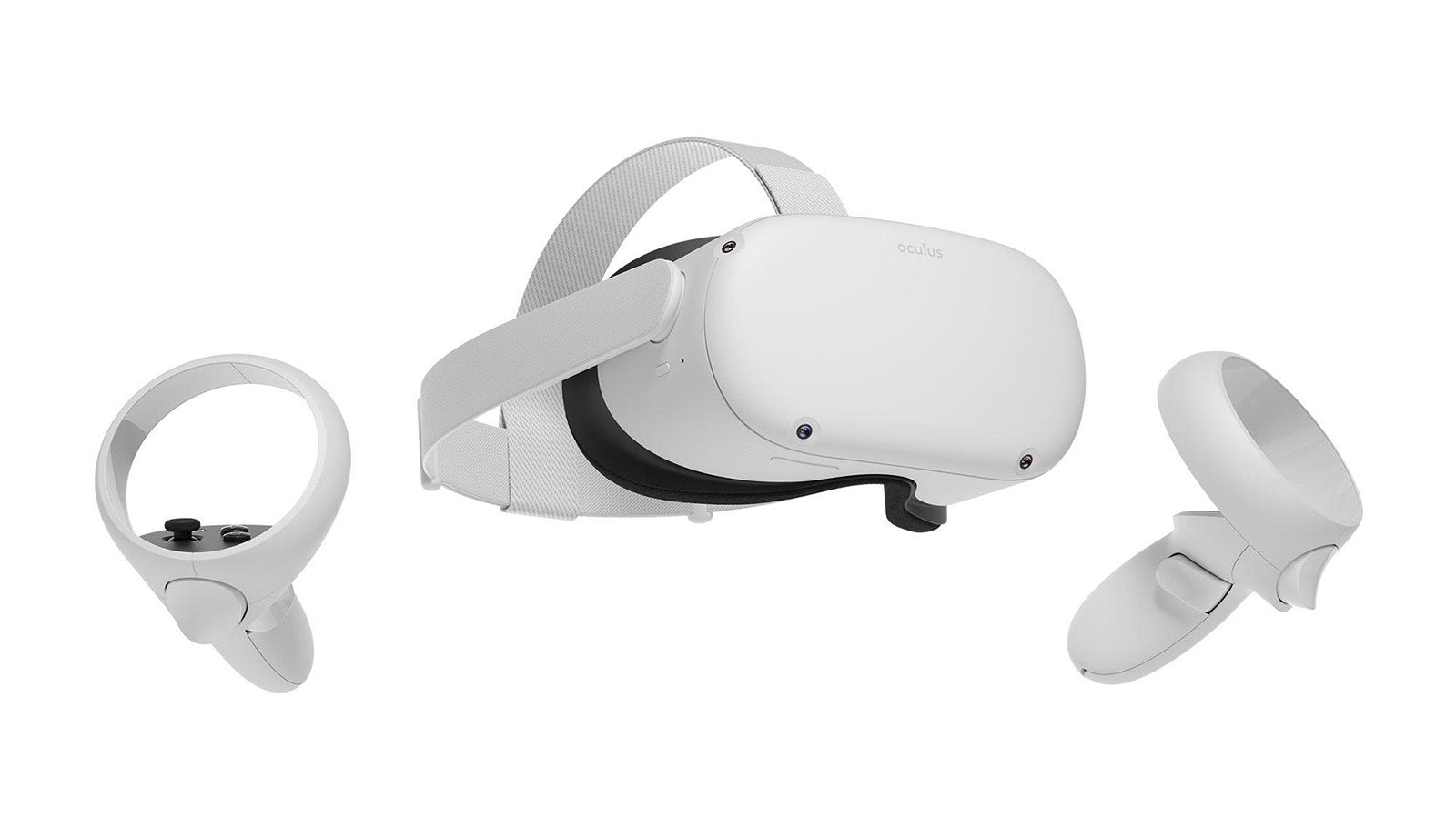
The Meta Quest 2 went in the opposite direction of Apple. Meta built a headset to deliver extremely budget-conscious hardware while reducing prices. For about 5% of the cost of the Vision Pro, you end up with a comparably barebones experience. But for movies, the Quest 2 is still a contender.
The supported resolution is about half of what Apple provides, but the Vision Pro is so absurdly powerful that even half its capacity is still gorgeous. The Quest’s refresh rates also lag behind competitors, making it somewhat less suitable for playing games. However, that does not infringe on its movie-displaying abilities in the least.
While other brands rely on sophisticated sensors to control their headsets, Meta Quest 2 decreases costs by giving users a set of hand controls. These controls resemble some of Nintendo’s most popular video game controllers, with trigger buttons on the side and loops to keep them in place.
Where the Meta Quest 2 suffers is in peak brightness, which tops out at around 100 nits. That’s fantastic for the device's battery lifespan, translating into a more comfortable user experience. But it’s pretty devastating for contrast, which makes the visual experience of using the Quest 2 reasonably good but far from excellent.
This device isn’t delivering world-class VR, but it’s priced to be competitive for those on tiny budgets.
Best for Touch Buttons: RayNeo XR TCL NXTWEAR S
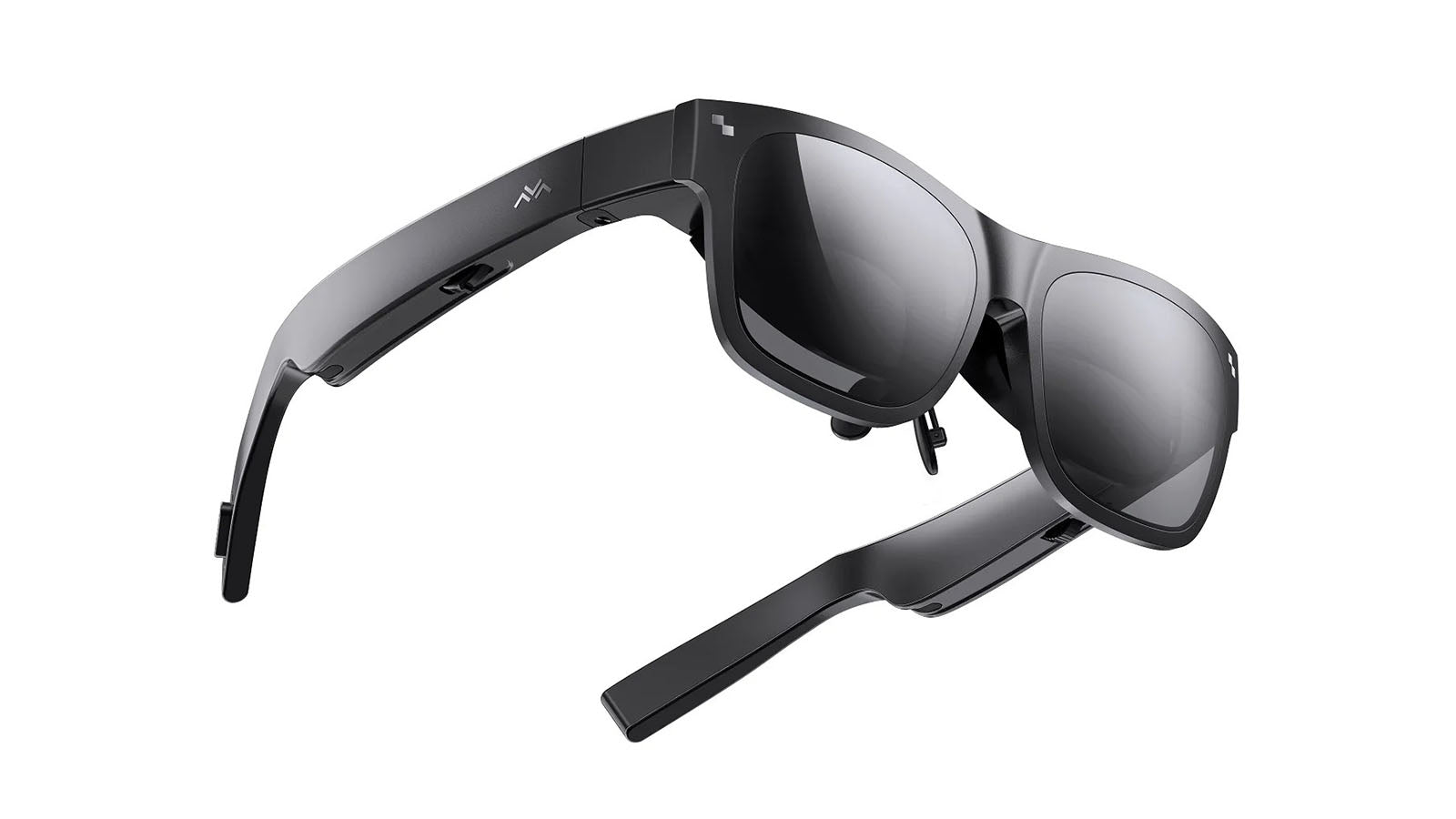
Rather than going above and beyond in minor details that most users won’t notice, RayNeo built its TLC NXTWEAR S around the most desired features. The result is a product that’s pretty good for watching all kinds of media.
Instead of trying to do fancy things with sensors, the RayNeo XR is primarily controlled with physical buttons. That setup can be much easier to use than a highly sensitive touch panel or scrolling wheel and much more cost-effective.
Picture quality is respectable in the 1080p range, but that’s a tad worse than Meta’s Quest 2. When you start to factor in its restrictive refresh rate, the TLC NXTWEAR S is a weak gaming option. You’ll enjoy these more if you’re experiencing content around 30FPS speed, which is most suitable for movies and TV.
Another thing to remember is that the narrower design of these glasses means you see a lot more of your surroundings. When traveling down the street, that’s much preferable to a fully enclosed experience like Apple’s Vision Pro. But it can be downright distracting in a busy room with many people around you.
Best AR Glasses for Watching Movies - FAQ
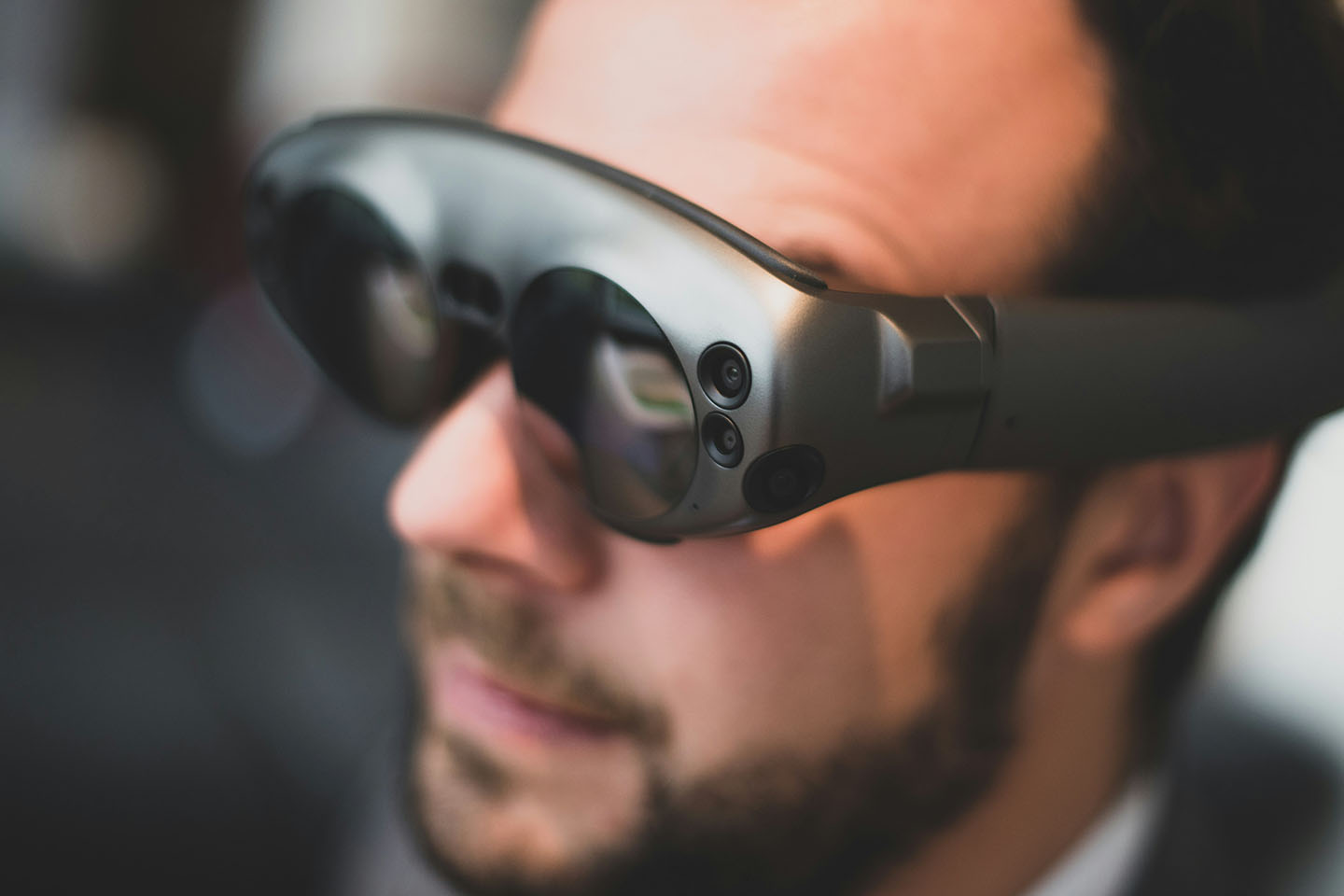
Can you watch movies with AR glasses?
Yes. Understanding what are AR glasses used for is a great first step in selecting a pair. Because augmented reality glasses overlay digital content on the physical world, they can be used for an interactive and totally immersive experience.
Of course, some AR glasses are more suitable for watching movies than others. For example, some allow more ambient light to enter your viewing area.
What factors should you consider when choosing the best AR glasses for watching movies?
You’ll want to focus on a few core factors. Display quality provides a sharper and more detailed image. Comfort is essential for long viewing times, while the field of view can influence the immersion of your visual experience.
Battery life will determine if you can finish a longer movie or need to recharge in the middle. Audio quality is almost self-explanatory. Content availability can also be an important consideration if the AR glasses support popular streaming services or not.
If you’re not only concerned with movies and want to use your glasses in other domains, you should consider our list of the best AR glasses overall.
What are the best AR glasses for movies?
Like many things in life, the best AR glasses for watching movies will depend on your budget.
If your budget is unlimited, there is no question that your best option is Apple’s Vision Pro. If you’re looking for something that cuts every corner for a barebones inexpensive experience, you may want the Meta Quest 2.
For people who want to ride the line between inexpensive and unaffordable, MyW delivers a premium-level movie experience at an affordable price. Our AR glasses offer the same core features as the Apple Vision Pro for a fraction of the cost.
Is using AR glasses to watch movies safe for you?
AR glasses are safe when used correctly. The light doesn’t hurt your eyes — the sun you see every day is tens of thousands of times brighter than any display you’ll ever use.
You should consider whether the AR glasses you are examining will prevent you from seeing your surroundings. You may also have to consider ergonomics and comfort — heavier devices can cause neck strain. Where there’s strain, you’ll also find repetitive stress injuries.
Choosing the Best AR Glasses for Movies
You don’t need to break the bank to get a first-class experience. All you need to do is know where your dollars are being spent. If you go with the most expensive options, much of your money is being spent on features that will not improve your movie experience.
If you are interested in a superb cinematic experience, start with the best price-to-performance option available. For that, you’ll want to begin your search with MyW AR glasses.

